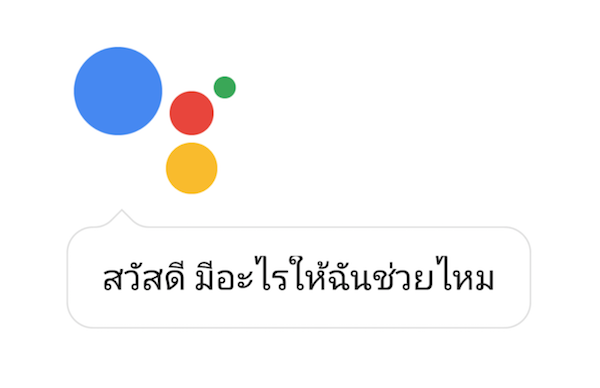Google Assistant Expands in Asia with Support for Thai and Indonesian

Google Assistant rolled out support for Thai language speakers last month and Indonesian earlier in the year as promised in a February announcement. The announcement stated that Google Assistant would expand to support more than 30 languages in 2018 and since that time has added Hindi, Singaporean English, Indonesian, and Thai to its Asian language portfolio joining Korean and Japanese which both launched in 2017. These moves have rapidly expanded Google Assistant market availability across Asia.
Android Leads Rapid Global Rollout for Google Assistant
Google is using its Android OS smartphone dominance to distribute Google Assistant globally ahead of its rivals and creating an opportunity to be the first to establish brand loyalty in the voice assistant product category. This loyalty would presumably move beyond the smartphone to smart TVs, other smart home devices and smart speakers. The broader distribution opportunity should make Google Assistant increasingly attractive to smart device makers knowing an investment in the technology can be leveraged in more global markets than competing assistants.
Google Home today is available in India, Japan and Singapore while it was announced that Koreans will be able to purchase the device later this year. Of the Asian countries with Google Assistant localization, only Thailand and Indonesia are not publicly mentioned for Google Home availability in 2018. However, Google never pre-announced availability in Singapore so an announcement isn’t necessarily a pre-requisite for smart speaker availability. It is a reasonable assumption that Google Home or another Google Assistant-enabled smart speaker will arrive in Indonesia and Thailand within the next year.
Google Assistant Pattern Emerges
Google Assistant and Home rollouts are beginning to follow a pattern. First a language localized Google Assistant is made available on Android smartphones. Then, after there are already users and some familiarity with Google Assistant on smartphones, the company launches Google Home smart speakers as an extension of the voice assistant experience. During that time, Google can presumably use Google Assistant smartphone session data to improve the service accuracy and enlist local companies to start building voice apps known as Actions to offer more value to users.
Three things needs to come together for the strategy to work. Google needs to produce the language localized Google Assistant version it can push to Android smartphones, users must try the service and third-parties begin offering additional content and apps. All of this starts not with the smart speaker, but with devices where Android commands 85% global market share: the smartphone. The 2005 Android acquisition already paid off handsomely for Google in the consumer shift to mobile platforms. It looks like that single $50 million investment is paying off once again in the latest platform shift to voice.
Google Assistant Coming to 30 Languages and Adding Multi-lingual Support in 2018








